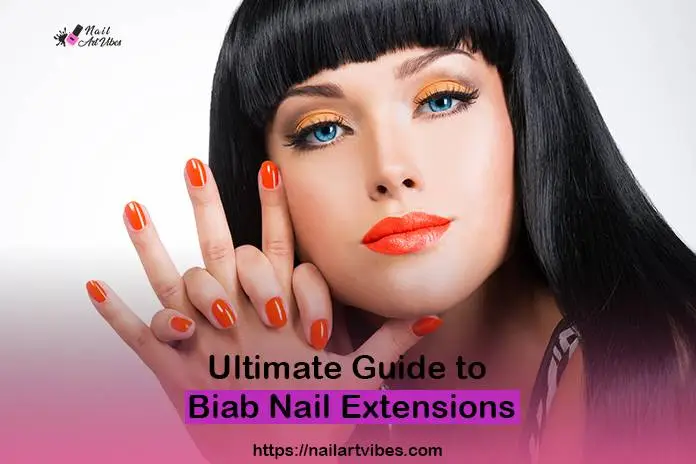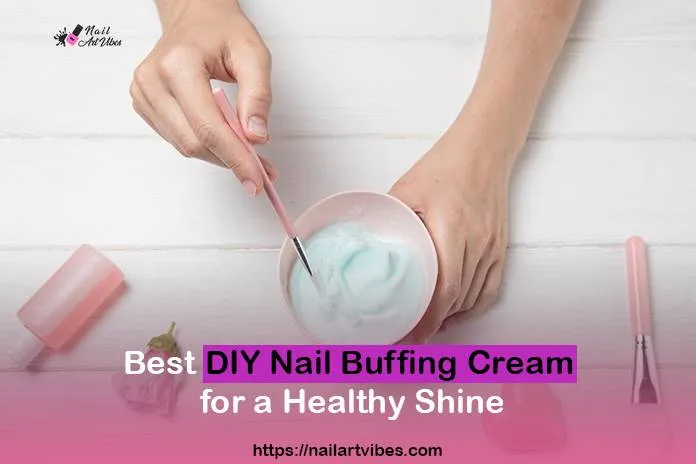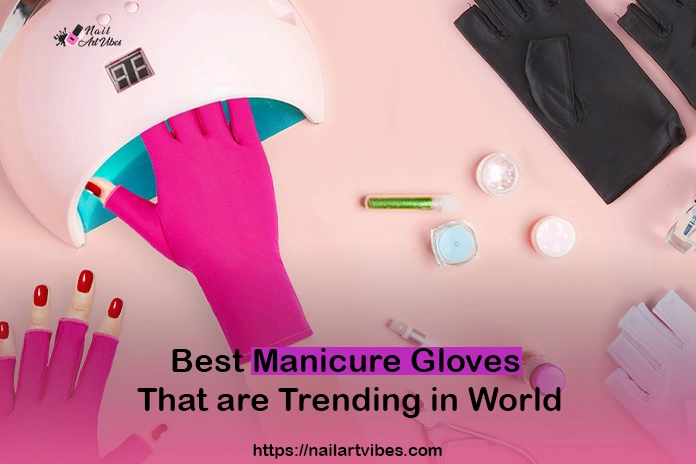Ultimate Guide to Biab Nail Extensions: Nail Tech Advice

Are you tired of dealing with weak, brittle nails that just won’t grow? Do you dream of having stunning, long-lasting-extensions that look and feel natural?
If so, then you’re in for a treat! In this comprehensive guide, we’re diving deep into the world of BIAB, also known as “Builder Gel in a Bottle” – a revolutionary gel-based technique that’s taking the nail industry by storm.
Say goodbye to fragile nails and hello to gorgeous, stronger-extensions that will leave you amazed.
Why This Article is Worth Reading
In the realm of extensions, BIAB stands out as a game-changer. Whether you’re a nail tech looking to expand your skills, an art enthusiast aiming for flawless extensions, or someone who simply wants healthier and more attractive nails, this article has everything you need.
From understanding the basics of Builder in a Gel Bottle to mastering its application and removal, we’ll cover it all.
Get ready to explore the step-by-step process, benefits, and essential tips for using Builder in a Bottle to achieve stunning extensions without the damage associated with traditional-acrylics or polygel.
1. What is BIAB and Why Should You Use It?
It is, short for “Builder in a Bottle,” a cutting-edge technique that combines the best of both worlds – the flexibility of soft gel nail polish and the strength of acrylics. It’s the perfect solution for individuals who crave stronger nails without sacrificing aesthetics.
This revolutionary hard gel is applied directly to the natural nail or an extension, creating a durable yet flexible layer that provides unmatched support.
2. Pros and Cons of BIAB
If you’re considering diving into the world of extensions, particularly the innovative Builder in a Bottle technique, it’s essential to weigh the pros and cons to make an informed decision.
Here’s a comprehensive overview of the advantages and potential drawbacks of extensions:
Pros:
1. Strength and Durability: BIAB manicure offers impressive strength, providing an excellent alternative to traditional-acrylics. The gel-based formula creates a sturdy foundation that can withstand daily activities without chipping or breaking easily.
2. Healthier Nails: Unlike some other nail extension methods that might weaken the natural nails underneath, BIAB can contribute to the health of your natural nails. The added layer of support can encourage nail growth and prevent breakage.
3. Flexibility: It strikes a balance between strength and flexibility. The extensions are less likely to feel rigid and uncomfortable, offering a more natural feel and movement.
4. Versatility: It is highly versatile, allowing you to choose between subtle, natural-looking nails or bold and intricate nail art designs. You can enjoy the best of both worlds with this technique.
5. Soak-Off Removal: One of the standout features of BIAB is its easy and gentle removal process. Unlike acrylic-nails, which often require filing and drilling, It can be soaked off using remover without causing significant damage to your nails.
6. Reduced Odor: Unlike acrylic-application, which can emit strong odors due to the use of liquid monomer, BIAB’s application process is generally more pleasant and less pungent.
Cons:
1. Learning Curve: While it is more accessible than some other nail techniques, there’s still a learning curve, especially if you’re new to applying gel-based products. Proper application requires practice and technique refinement.
2. Professional Skill: Achieving optimal results with BIAB might be easier when done by a professional nail technician. If you’re not experienced with nail art, seeking a professional’s help could lead to better outcomes.
3. Limited Length: BIAB might not provide the same length options as acrylic-, particularly for those who desire extremely long nails. The focus is often on natural and manageable lengths.
4. Maintenance Required: Like any nail, it requires regular maintenance in the form of fills. This upkeep is essential to maintain the seamless look and strength of the fake nails.
3. How to Apply BIAB: Step-by-Step Guide
Prep Your Nails
Before diving into the use BIAB application, proper nail preparation is crucial. Start by shaping your nails and pushing back your cuticles gently. Lightly buff the surface of your own nails to ensure better adhesion.
Tip: For those looking to give their own nails a break, BIAB can also be applied over existing fake nails.
Applying BIAB
- Base Coat: Apply a thin layer of the BIAB gel as a base coat. This initial layer will help create a strong foundation.
- Extension Building: If you’re looking to add length, now’s the time. Apply a thicker layer of BIAB gel to the tips of your nails to create extensions. You can use nail forms or tips to achieve your desired length.
- Structure and Strength: Apply another layer of BIAB gel to provide structure and strength to your Fake nails. Use an orangewood stick to shape the gel before curing.
- Color and Seal: Choose your favorite gel polish color and apply a thin layer over the nails. Cure the gel polish according to the manufacturer’s instructions. Finish with a glossy top coat for added shine.
Tip: If you’re feeling artistic, this is the perfect opportunity to experiment with nail art, patterns, or even the ever-popular French manicure style.
4. Removing BIAB
One of the most significant advantages of BIAB is its easy removal process. Unlike acrylics which often require filing and drilling, It is a soak-off gel. Here’s how to remove it:
- Gentle Buffing: Use a gentle buffer to break the top layer of the BIAB. This step allows the remover to penetrate the gel more effectively.
- Acetone Soak: Soak a piece of cotton in acetone and place it directly onto your nails. Wrap each fingertip with aluminum foil to secure the cotton and create a sealed environment.
- Waiting Game: Relax and wait for about 10-15 minutes. The acetone will soften the gel, making it easy to remove.
- Gentle Removal: After the soak off time, gently push off the softened gel using an orangewood stick. Be careful not to force it – if the gel doesn’t come off easily, soak for a bit longer.
Tip: If you’re in a rush, consider using pre-made acetone wraps designed specifically for easy gel removal.
5. BIAB vs. Acrylic: The Showdown
Many nail enthusiasts wonder about the differences between BIAB and traditional acrylics. Let’s break it down:
BIAB
- Flexibility: It offers flexibility and durability, making it less prone to chipping or cracking.
- Application: Applied like regular gel polish, It doesn’t require a separate monomer or mixing.
- Removal: Biab is a Soak-off removal recommending technique as it is gentler on nails and doesn’t involve drilling or filing.
Acrylic
- Strength: Acrylic nails are known for their strength and durability.
- Application: Acrylics require a liquid monomer and powder polymer mixture for application.
- Removal: Often involves filing and drilling, which can lead to weaker nails.
6. Tips for Maintaining Your BIAB Extensions
To ensure the longevity and health of your BIAB, follow these tips:
- Nail Care: Apply cuticle oil regularly to maintain the health of the natural nail underneath the BIAB.
- Infill: As your nails grow, you may notice a gap between the cuticle and the nail. The schedule fills every 2-3 weeks to maintain a seamless look.
- Avoid Heavy Pressure: While it is strong and durable, avoid using your nails as tools for heavy lifting or opening cans.
- UV Protection: If you spend a lot of time outdoors, consider applying a UV-protective top coat to prevent color fading.
Tip: Regular nail care and maintenance not only extend the life of your fake nails but also promote the health of your natural nails.
Frequently Asked Questions
1. How is BIAB different from traditional acrylic nails?
Builder-in-a-Bottle is a gel-based technique that offers the strength of acrylics while maintaining the flexibility of gel polish. Unlike traditional acrylics, It doesn’t require mixing liquid monomer and powder polymer, and its removal is gentler on nails.
2. Can I apply BIAB over my existing nails?
Yes, Builder-in-a-Bottle can be applied over existing nails, whether they’re natural nails, gel nails, or acrylics. It provides an additional layer of support and can help improve the overall appearance and durability of your extensions.
3. Are BIABs suitable for people with weak and brittle nails?
Absolutely! In fact, BIAB is particularly beneficial for individuals with weak and beaten nails. It adds a layer of strength and support to your natural nails, helping them grow longer and healthier over four weeks.
4. How often do I need to get infills for BIABs?
It’s recommended to schedule fills every 2-3 weeks as your natural nails grow. This helps maintain the seamless look of your BIAB and ensures they remain strong and durable.
5. Can I do BIAB at home, or should I visit a salon?
While these can be done at home, it’s advisable to visit a salon, especially if you’re new to the technique. A professional nail tech can ensure proper application and provide expert guidance, leading to better results and a longer-lasting manicure.
Conclusion
BIAB is the perfect procedure and is more than just a technique – it’s a game-changer for anyone looking to enhance the beauty and strength of their nails.
Whether you’re a nail tech or an art enthusiast, the world of gel extension offers endless possibilities for creating stunning, durable extensions.
Say goodbye to weak, bitten nails and say hello to a new era of gorgeous, healthier nail solutions. You may get the additional advantage of wearing BIAB along with dip powder, gel, or acrylic nails.






